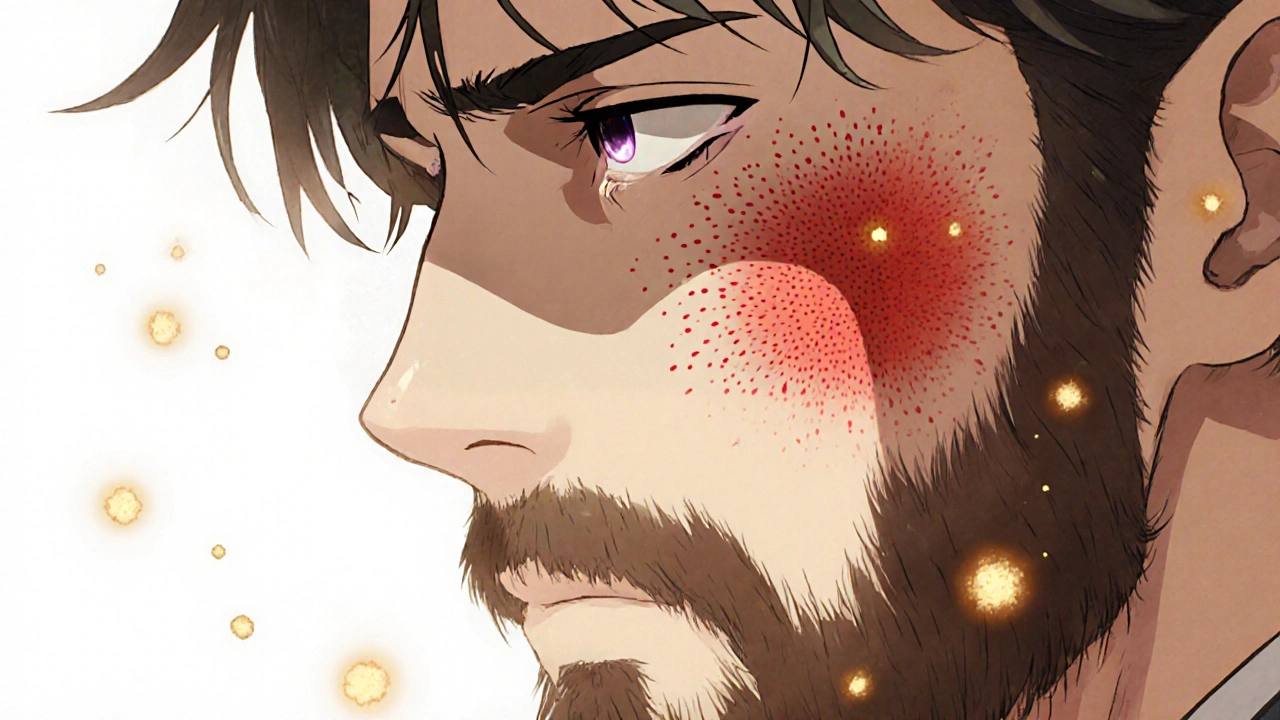Tinea Barbae: What It Is, How It Spreads, and What Treatments Work
When you get a stubborn, itchy rash in your beard that won’t go away with regular shaving or creams, it might not be irritation—it could be tinea barbae, a fungal infection caused by dermatophytes that targets bearded skin. Also known as ringworm of the beard, this condition isn’t caused by worms at all—it’s a type of fungus that thrives in warm, moist areas and loves to invade hair follicles. It’s more common in men with thick facial hair, especially those who work with animals, shave roughly, or share razors and towels.
Tinea barbae doesn’t just sit on the surface. It digs into the hair follicles, causing red, swollen bumps, pus-filled lesions, and sometimes even hair loss in patches. You might notice crusting, scaling, or a deep, painful inflammation that feels like a bad acne breakout—but it won’t respond to antibiotics because it’s not bacterial. That’s why so many people waste weeks trying acne treatments, only to see it get worse. The real fix? antifungal treatment, oral or topical medications that target the fungus directly. Common options include terbinafine, itraconazole, or griseofulvin, taken for several weeks. Topical creams alone usually aren’t enough if the infection is deep.
This isn’t just a personal issue—it’s contagious. If you share a razor with someone who has tinea barbae, or if you pet an infected dog or cow, you’re at risk. Farmers, veterinarians, and barbers see it more often than you’d think. Even your own scalp fungus can spread to your beard if you scratch and then touch your face. That’s why treating other fungal infections, like tinea corporis, ringworm on the body, quickly matters. And yes, shaving won’t fix it. In fact, shaving over infected skin can spread the fungus and make it worse.
What you’ll find in the posts below aren’t generic advice pages. These are real, practical guides from people who’ve dealt with this—how one man cleared his tinea barbae after three failed treatments, how a vet noticed it in a dog and caught it before it spread to his own beard, and why some antifungal creams work better than others based on active ingredients. You’ll also see how it connects to other skin conditions like folliculitis, how to tell it apart from bacterial infections, and what to do if your doctor dismisses it as "just irritation." This isn’t about guessing. It’s about knowing exactly what you’re dealing with—and how to beat it for good.
Griseofulvin for Tinea Barbae: Effective Treatment Guide
- DARREN LLOYD
- 13
Learn how griseofulvin treats tinea barbae, dosage guidelines, side effects, and how it compares to newer antifungals for a fast, effective cure.
READ MORE
